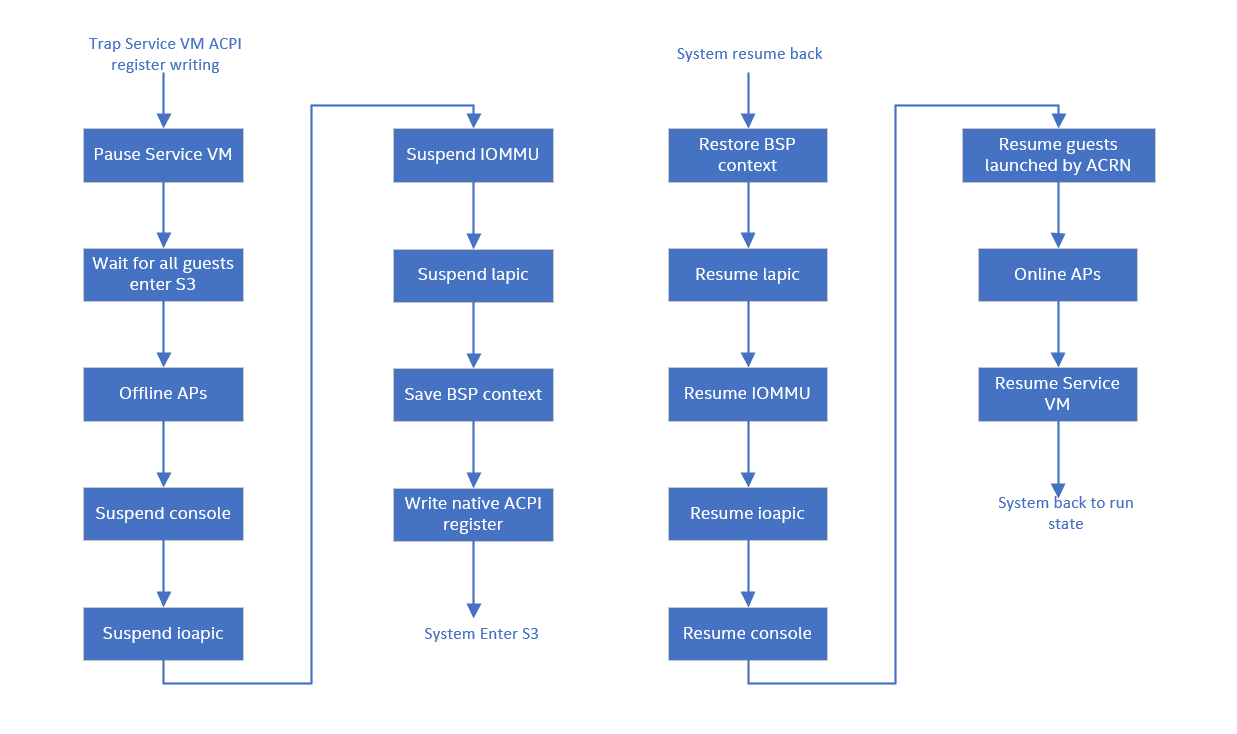Power Management¶
System PM Module¶
The PM module in the hypervisor does three things:
Monitors all guests power state transitions and emulates a low power state for the guests which are launched by the HV directly.
Once all guests enter low power state, the Hypervisor handles its own low-power state transition.
Once the system resumes from low-power mode, the hypervisor handles its own resume and emulates the Service VM resume.
It is assumed that the Service VM does not trigger any power state transition until the VM manager of ACRN notifies it that all User VMs are inactive and Service VM offlines all its virtual APs. And it is assumed that HV does not trigger its own power state transition until all guests are in low power state.
Figure 157 shows the Hypervisor entering S3 state process. The Service VM triggers power state transition by writing ACPI control register on its virtual BSP (which is pinned to the physical BSP). The hypervisor then does the following in sequence before it writes to the physical ACPI control register to trigger physical power state transition:
Pauses Service VM.
Wait all other guests enter low power state.
Offlines all physical APs.
Save the context of console, ioapic of Service VM, I/O MMU, lapic of Service VM, virtual BSP.
Save the context of physical BSP.
When exiting from S3 state, the hypervisor does similar steps in reverse order to restore contexts, start APs and resume all guests launched by hypervisor directly. Service VM is responsible for starting its own virtual APs as well as User VMs.

Figure 157 Service VM/Hypervisor S3 transition process¶